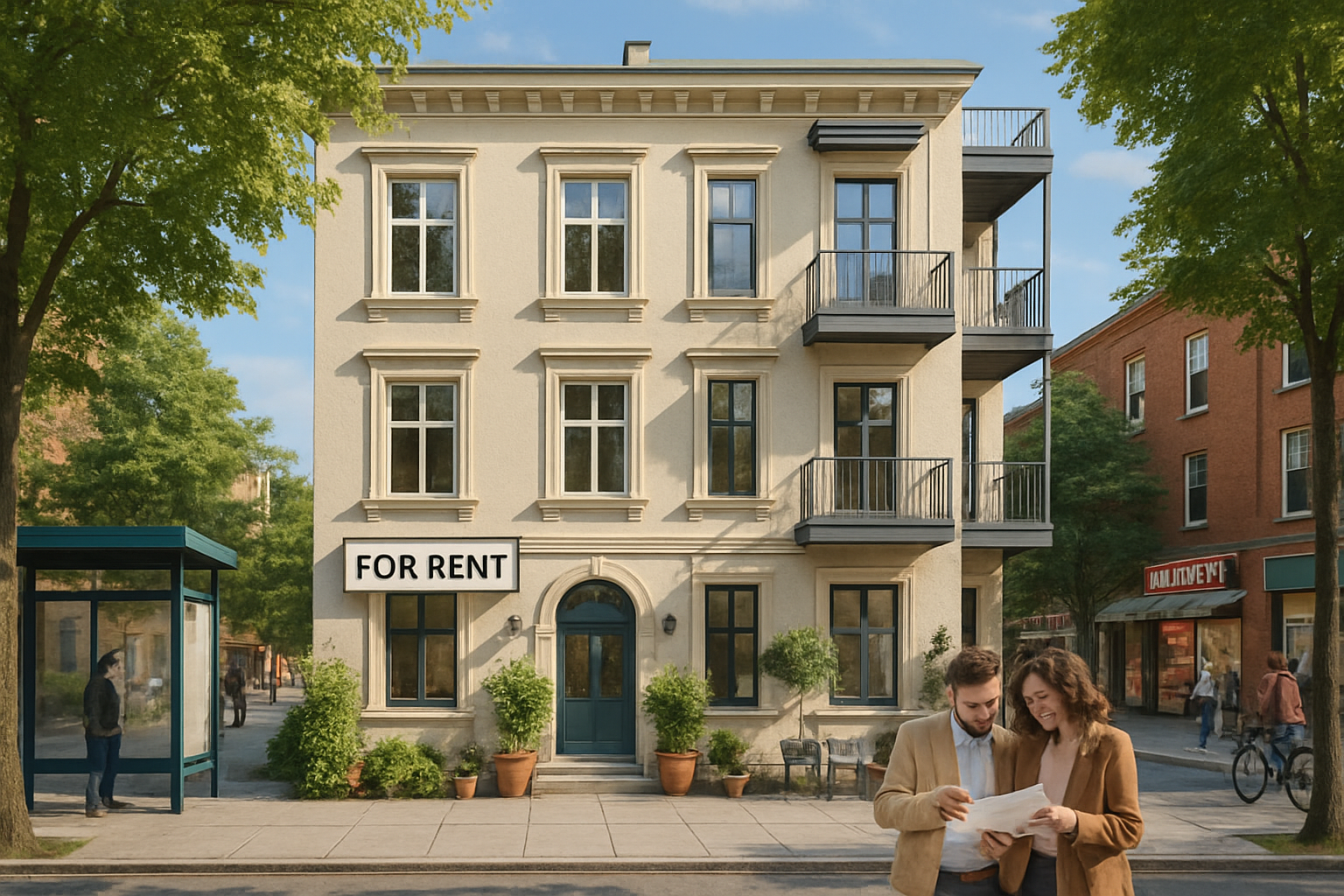Apartment management is attracting attention from many people as an attractive investment method that provides a stable rental income. However, one of the most important factors in actually starting an apartment business is the preparation of "personal funds.
INA&Associates has received a number of inquiries such as "I want to start apartment management, but I don't know how much self-financing I need," or "What kind of financial plan should I make in the midst of the continuing rise in interest rates?
In this article, based on the latest information available in 2025, we, as experts in real estate investment, will explain in detail the guidelines for the self-financing required for apartment management, a detailed breakdown of initial costs, and even how to make an effective financial plan. We will strive to provide practical and useful information for those who are considering apartment management.
Basic knowledge of the self-financing required for apartment management
The standard amount of personal funds is 10-30% of the property price.
The standard amount of personal funds required to start apartment management is generally between 10% and 30% of the property price. The reason for the wide range is that the required equity capital ratio varies depending on the investor's attributes, the location and age of the property, and the lending policies of financial institutions.
Specifically, the following factors affect the cash on hand ratio
Influence by investor attributes
If the investor has good attributes such as annual income, place of employment, and length of employment, he/she may be more creditworthy to financial institutions and may be able to obtain a loan with less equity capital. On the other hand, if you are self-employed or have just changed jobs, more personal funds tend to be required.
Effect of the collateral value of the property
Newly built or recently constructed properties and properties in good locations, such as near train stations, are highly valued as collateral, which may reduce the equity ratio. Conversely, older properties and properties in inferior locations generally require more equity capital.
Breakdown of personal funds: down payment and other expenses
Personal funds can be roughly divided into two categories: down payment and other expenses.
Down Payment
This is the cash portion of the property price, and is generally 10-20% of the property price. A large down payment has the advantage of reducing the amount of borrowing and the monthly repayment burden.
Other Expenses
These are the various expenses incurred in the acquisition of a property and generally range from 5 to 10% of the property price. These expenses include brokerage fees, registration fees, real estate acquisition taxes, fire insurance premiums, and loan-related costs.
Why is the net worth ratio important?
The equity ratio is an important factor that determines the success of apartment management. Ensuring an appropriate equity ratio provides the following benefits
Improved cash flow
By investing more of your own funds, you will be able to reduce the amount of borrowing and lower your monthly loan repayments. This reduces the ratio of repayment to rental income, ensuring a more stable cash flow.
Obtain preferential interest rates
Many financial institutions offer preferential interest rates for projects with a high equity ratio. Even a 0.1% difference in interest rates can make a big difference in repayment over a long period of time, so preparing your own funds directly improves the profitability of your investment.
Improvement of loan approval rate
Preparing sufficient self-financing will increase the creditworthiness of financial institutions and make it easier to pass loan examinations. Especially in times of rising interest rates, such as the current one in 2025, financial institutions are becoming more cautious in their lending stance, making self-financing even more important.
Details and Breakdown of Initial Costs for Apartment Management
The initial costs of starting an apartment management business cover a wide range of expenses in addition to the construction and purchase costs of the property. The first step to success is to accurately understand these costs and incorporate them into your financial plan.
Major Initial Expenses
| Cost Item | Approximate Amount | Outline |
|---|---|---|
| Construction and purchase costs | 90-80% of the property price | Portion to be financed by apartment loan |
| Brokerage fee | 3% of property price + 60,000 yen | Compensation to the real estate company (when purchasing an existing property) |
| Real estate acquisition tax | 3-4% of property tax assessed value | Prefectural tax (with reduction measures) |
| Registration fee | 300,000 to 500,000 yen | Registration of transfer of ownership, registration of establishment of mortgage, etc. |
| Stamp tax | 10,000 - 60,000 yen | Affixed to sales contracts and loan agreements |
| Fire and earthquake insurance premiums | 100,000-300,000 yen per year | Variable depending on the structure and size of the building |
| Loan administration fee | 1-2% of loan amount | Varies by financial institution |
| Loan guarantee fee | 1-2% of loan amount | Payment to guarantee company |
| Judicial scrivener fee | 100,000-200,000 yen | Agency fees for registration procedures |
Details of Construction and Purchase Costs
The composition of initial expenses differs between building a new apartment and purchasing an existing apartment.
In the case of new apartment construction
The construction cost of a new apartment varies greatly depending on the structure and specifications. For a wooden apartment, the general market price is around 80 tsubo per unit. For steel-framed or reinforced concrete construction, the cost per tsubo is more expensive at around 1 to 1.2 million yen.
In addition to construction costs, ancillary construction costs such as ground investigation, surveying, building permit application, and water and sewer installation are required. These costs should be expected to account for 10-15% of the construction costs.
Purchasing an existing apartment
When purchasing an existing apartment, brokerage fees will be charged in addition to the property price. The maximum brokerage fee is set by law at "3% of the property price plus 60,000 yen," and many real estate agencies charge this maximum amount.
In addition, it is important to take these costs into account as initial expenses, as remodeling and repairs may be required immediately after purchase in the case of a pre-owned property.
Detailed Explanation of Other Expenses
Real Estate Acquisition Tax
The real estate acquisition tax is a one-time prefectural tax levied upon the acquisition of real estate. The tax rate is 3% (residential) or 4% (non-residential) of the property tax assessed value. However, reduced rates may apply to newly built or used residences.
Registration Expenses
This is the cost of registering the transfer of ownership or the establishment of a mortgage on real estate. It includes registration and license tax and fees for judicial scriveners. The registration tax is calculated by multiplying the assessed value of the property by a certain tax rate.
Fire and earthquake insurance premiums
Fire insurance for the building is mandatory for apartment management. Earthquake insurance is optional, but strongly recommended considering the earthquake risk in Japan. Premiums are determined by the structure of the building, its location, and the amount of insurance.
Loan-Related Costs
When taking out an apartment loan, an administration fee and guarantee fee will be charged. The administration fee is either a fixed fee (approximately 30,000-50,000 yen) or a fixed percentage fee (1-2% of the loan amount), which varies depending on the financial institution. The guarantee fee is required when using a guarantee company, and the amount is determined by the loan amount and loan term.
Latest apartment loan interest rate trend in 2025
As of 2025, the apartment loan interest rate environment is undergoing major changes. Due to changes in the Bank of Japan's monetary policy, the long period of ultra-low interest rates has come to an end, and interest rates have entered an upward phase.
Comparison of Interest Rates by Financial Institution
| Financial Institution Classification | Interest Rate Range | Characteristics |
|---|---|---|
| Japan Housing Finance Agency | 1.2~2.0 | Fixed interest rate, long-term financing available |
| Megabanks | 1.0~2.5%, with preferential interest rates | Attribute-oriented, preferential interest rates available |
| Regional banks | 2.0~4.0%, community-based, flexible screening | Community-based, flexible screening |
| Shinkin banks and credit unions | 2.5~4.5%, regional specialization, individualized | Regional specialization, individualized support |
| Non-bank | 3.0~5.0%, with | Focus on speed of screening |
Impact of rising interest rates and countermeasures
Impact on repayment amount
A 1% increase in interest rates will increase monthly repayments by approximately 28,000 yen for a loan amount of 50 million yen and a repayment period of 30 years. Since the annual burden will increase by approximately 336,000 yen, a rise in interest rates will have a significant impact on the profitability of the investment.
Choice between Floating and Fixed Interest Rates
During the current rising interest rate environment, an increasing number of investors are considering choosing fixed interest rates. While variable rates offer lower initial interest rates, they carry the risk of future interest rate increases. Fixed interest rates have a higher initial interest rate, but you avoid the risk of interest rate fluctuations during the repayment period.
Key Points for Loan Screening
As of 2025, financial institutions are screening loans more rigorously than before. The main points of examination are as follows
Screening of investor attributes
Annual income, employer, length of employment, and other borrowing conditions are examined in detail. In particular, the ratio of repayment to annual income (annual repayment divided by annual income) is an important indicator, and is generally considered to be 40-50% or lower.
Property Profitability Evaluation
Profitability is evaluated based on the property's location, age, expected rent, and vacancy rate. Financial institutions have their own evaluation standards, and there may be a difference between the market value and the financial institution's evaluation value.
Importance of Self-financing Ratio
As mentioned earlier, the proprietary funds ratio is an important factor in loan screening. The higher the proprietary capital ratio, the higher the evaluation by financial institutions and the more favorable loan terms can be expected.
Use of preferential interest rate programs
Many financial institutions offer preferential interest rates when certain conditions are met.
Preferential treatment based on attributes
Government employees, employees of listed companies, and professionals such as doctors and lawyers may be eligible for preferential interest rates. In addition, those with a track record of transactions with financial institutions may also be eligible for preferential interest rates.
Preferential treatment by property
Properties with high energy-saving performance, properties with excellent earthquake resistance, and properties certified as excellent long-term housing may be eligible for preferential interest rates.
Preferential interest rates based on the loan-to-value ratio
If the equity capital ratio is above a certain level, preferential interest rates may be available. For example, some financial institutions offer preferential interest rates of 0.1% to 0.2% with a net worth ratio of 30% or more.
Simulation by Own Funds
The following is a simulation of actual apartment management, showing what kind of investment is possible depending on the amount of capital on hand.
Case of an apartment with a property value of 50 million yen
Simulations are performed for each amount of capital under the following conditions.
Common conditions
- Property price: 50 million yen
- Assumed annual rental income: 6 million yen (12% surface yield)
- Loan term: 30 years
- Interest rate: 2.0% (variable interest rate)
- Annual expenses: 1.8 million yen (30% of rental income)
| Self-financing amount | 10 million yen | 15 million yen | 20 million yen |
|---|---|---|---|
| Loan amount | 40 million yen | 35 million yen | 30 million yen |
| Ratio of cash on hand | 20% (in the case of a loan) | 30 | 40% (%) |
| Monthly repayment amount | Approx. 148,000 yen | Approx. 129,000 yen | Approx. 111,000 yen |
| Annual repayment | Approx. 1,776,000 yen | Approx. 1,548,000 yen | Approx. 1,332,000 yen |
| Annual cash flow | Approx. 2,424,000 yen | Approx. 2,652,000 yen | Approx. 2,868,000 yen |
| Investment yield (based on own funds) | 24.2% 17.7 | 17.7% (based on cash on hand) | 14.3% (based on cash on hand) |
Analysis of Simulation Results
Case of 10 million yen in cash on hand
In the case with a 20% equity capital ratio, the investment yield based on equity capital is as high as 24.2% due to the leverage effect. However, the high amount of borrowings makes it susceptible to the risk of rising interest rates, and its tolerance for vacancy risk is also relatively low.
Case of 15 million yen in cash on hand
In the case of a 30% equity ratio, the investment yield and risk are well balanced. It has sufficient annual cash flow and a certain degree of resistance to rising interest rates and vacancies.
The case of 20 million yen in cash on hand
The case with a 40% equity ratio is the most stable investment. Since the amount of borrowing is small, it is less susceptible to interest rate fluctuations, and even if vacancies occur, the risk of negative cash flow is low.
Simulation of rising interest rates
Let's look at the impact if interest rates rise from 2.0% to 3.0%.
| Amount of personal funds | 10 million yen | 15 million yen | 20 million yen |
|---|---|---|---|
| Monthly repayment (interest rate 3.0%) | Approx. 169,000 yen | Approx. 148,000 yen | Approx. 127,000 yen |
| Annual repayment increase | Approx. 252,000 yen | Approx. 220,000 yen | Approx. 189,000 yen |
| Annual cash flow | Approx. 2,172,000 yen | Approx. 2,432,000 yen | Approx. 2,679,000 yen |
| Cash flow decrease rate | 10.4% (10.4%) | 8.3% (8.3%) | 6.6% 6.6 |
As this simulation shows, the higher the cash-on-hand ratio, the less susceptible to the impact of rising interest rates.
Simulation Considering Vacancy Risk
Vacancy risk is also an important factor in apartment management. Let's also check the simulation for a vacancy rate of 10% (annual rental income of 5.4 million yen).
| Self-financing | 10 million yen | 15 million yen | 20 million yen |
|---|---|---|---|
| Annual rental income (vacancy rate 10%) | 5.4 million yen | 5.4 million yen | 5.4 million yen |
| Annual expenses | 1.62 million yen | 1.62 million yen | 1.62 million yen |
| Annual repayment | Approx. 1,776,000 yen | Approx. 1,548,000 yen | Approx. 1,332,000 yen |
| Annual cash flow | Approx. 2,004,000 yen | Approx. 2,232,000 yen | Approx. 2,448,000 yen |
| Cash flow decrease rate | 17.3% (17.3%) | 15.8% (15.8%) | 14.6% (14.6%) |
Even when vacancies occur, positive cash flow is maintained in all cases, confirming that the higher the self-financing ratio, the greater the stability.
How to Prepare Self-Financing Efficiently
A systematic approach is important to efficiently prepare the personal funds needed to manage an apartment building. Here are some practical financing options.
Funding Options
Funding from payroll income
The most basic method is to accumulate a fixed amount from your monthly paycheck. Set a target amount and time period, then work backwards to determine the monthly amount to be accumulated. For example, if you want to prepare 15 million yen over 5 years, you will need to accumulate 250,000 yen per month.
Use of Existing Assets
You can sell stocks, mutual funds, and other financial assets and use them as personal funds. However, since losses may occur depending on the timing of the sale, a decision must be made based on an assessment of market trends.
Selling or refinancing real estate
There are ways to raise funds by reshuffling one's home or selling existing investment real estate. It is also possible to generate surplus funds by refinancing existing mortgages.
Gifts and loans from relatives
Gifts and loans from relatives can also be utilized. In the case of gifts, it may be possible to take advantage of the basic exemption for gift tax (1.1 million yen per year) and special provisions for gifts of funds for home acquisition, etc.
Improvement of financial efficiency through tax-saving measures
Maximize the use of income tax deductions
By utilizing income tax deduction systems such as iDeCo and Furusato Tax, you can reduce your tax burden and use the tax savings to prepare your own funds.
Tax savings by establishing a corporation
If you are investing in real estate above a certain size, you may be able to save on taxes by establishing a corporation. Corporate tax rates are often lower than income tax rates, and the scope of taxable expenses is expanded.
Depreciation
Depreciation of the building portion of a real estate investment can be used to write off losses on the books. This can reduce income taxes and improve cash flow.
Importance of Risk Management
Securing Emergency Funds
In apartment management, there is a possibility of unexpected expenses such as unexpected repair costs or prolonged vacancy periods. It is important to set aside a contingency fund of 5-10% of the property price in addition to your own funds.
Consider diversification of investments.
Instead of investing all your money in a single apartment, you can reduce risk by diversifying your investments across multiple properties. However, since diversification requires a reasonable amount of capital, a phased approach is more realistic.
Use of Insurance
In addition to fire and earthquake insurance, consider purchasing rent guarantee insurance and premises liability insurance. Insurance premiums can be recorded as an expense and can be expected to hedge risk.
Building Relationships with Financial Institutions
Deepen transactions with your main bank.
By building a track record of transactions with your main bank, such as payroll transfers and mortgage loans, you may be able to obtain favorable terms in the apartment loan process.
Build relationships with multiple financial institutions
Instead of relying on one financial institution, building relationships with multiple financial institutions allows you to compare and consider better loan terms.
Cooperation with real estate companies
Real estate companies with a proven track record often have strong connections with financial institutions, which can be advantageous when mediating loans and negotiating terms and conditions.
Summary: Successful apartment management financial planning
We have explained in detail the personal funds required for apartment management based on the latest information available in 2025. We will reiterate the important points.
Key Points of Self-financing Preparation
Ensure an appropriate self-financing ratio
The basic rule of thumb is to prepare 10-30% of the property price, but under the current rising interest rate environment, securing 20-30% of the property price will allow for a more stable investment.
Accurate understanding of initial costs
In addition to construction and purchase costs, other expenses of 5-10% of the property price are required. It is important to accurately grasp these costs in advance and incorporate them into your financial plan.
Responding to Interest Rate Trends
With interest rates on the rise as of 2025, it is important to mitigate the risk of interest rate fluctuations by choosing fixed interest rates and increasing the equity ratio.
Action Guidelines for Success
The following steps are recommended for successful apartment management
- Assess your current asset situation: accurately grasp the assets available for self-financing
- Set investment goals: Clarify the expected rate of return and investment period
- Select a property: Evaluate the location, age of the property, yield, and other factors in a comprehensive manner
- Comparative study of financial institutions: Select the best financing terms from multiple financial institutions
- Establish a risk management system: Prepare vacancy measures, repair plans, insurance coverage, etc.
Importance of Cooperation with Specialists
Apartment management is a long-term investment, and various factors, such as changes in the market environment and revisions to the legal system, can affect profitability. The shortcut to success is to work with real estate investment specialists, tax accountants, financial planners, and other experts and receive ongoing advice.
At INA & Associates, Inc., we place "human capital" and "trust" at the core of our management, and we support each client with optimal apartment management tailored to their individual investment goals. With our extensive experience and expertise, we provide total support from financial planning to property selection and loan brokerage.
Please feel free to contact us if you would like to discuss your apartment management needs or request a more detailed financial simulation. We will do our best to support you in building your assets and realizing a prosperous future.
Frequently Asked Questions (FAQ)
Q1: Is it possible to manage an apartment building even if I have little personal funds?
A1: It is possible to start apartment management even if you have little personal funds. However, please note the following points
Risks of a full loan
With a full loan without personal funds, the monthly repayment burden will be higher, and you will be more susceptible to vacancies and rising interest rates. Also, financial institutions tend to be more stringent in their screening process.
Consider investing in stages.
A staged approach is also effective, starting with a condominium investment to build a track record, and then moving on to larger apartment investments.
Use of co-investment
There is also the option to purchase an apartment building jointly with several investors. However, joint investments have risks such as complicated rights relationships, so careful consideration is required.
Q2: Are there any measures to be taken in times of rising interest rates?
A2. The following measures are effective in times of rising interest rates.
Selecting a fixed interest rate
Although the initial interest rate will be higher than variable interest rates, it avoids the risk of interest rate fluctuations during the repayment period. Make your choice based on a comprehensive assessment of current interest rate levels and future interest rate prospects.
Improvement of self-financing ratio
Increasing the equity ratio will reduce the amount of borrowing and mitigate the impact of rising interest rates. If possible, it is recommended to prepare at least 30% of the property price as equity capital.
Utilize prepayment
When excess funds are available, reducing the principal through early repayment can reduce the future interest rate burden.
Q3: What are some points that beginners should pay attention to?
A3. Beginners in apartment management should pay particular attention to the following points.
Importance of location
Location is the most important factor in real estate investment. Evaluate the distance from the station, the surrounding environment, and future development plans comprehensively.
Conservative income/expenses plan
Calculate rental income based on realistic figures that take vacancy rates into account, rather than assuming full occupancy. It is also important to properly estimate expenses such as repair and maintenance costs.
Consideration of exit strategy
By considering the timing of sale and estimated sale price from the time of purchase, a more strategic investment can be made.
Cooperation with specialists
The shortcut to success is to collaborate with real estate companies, tax accountants, judicial scriveners, and other specialists and receive appropriate advice as you proceed.
Q4: What factors are emphasized in the loan approval process?
A4. The following factors are considered important in the loan approval process by financial institutions.
Investor attributes
Annual income, place of employment, length of employment, and other borrowing conditions are examined in detail. Stable income and good credit standing are important.
Profitability of the property
The profitability of the property will be evaluated based on factors such as expected rent, vacancy rate, and location. It is important to set an appropriate rent that is in line with the market rate.
Repayment ratio
The ratio of annual repayment to annual income is important. Generally, the ratio should be 40-50% or less.
Self-financing ratio
The higher the equity ratio, the higher the evaluation by financial institutions. We recommend that you prepare at least 10% of the property price, and preferably 20% or more.
Q5: What are the tax advantages of apartment management?
A5: Apartment management has the following tax advantages.
Tax savings from depreciation
Depreciation of the building portion allows you to book losses. This can be expected to reduce income taxes.
Scope of expense recognition
Management fees, repair costs, insurance premiums, taxes, interest on loans, etc. can be recorded as expenses.
Inheritance Tax Prevention
Rental real estate is also effective as an inheritance tax measure because the inheritance tax assessed value is lower than the market value of the property.
However, tax treatment is complex and depends on individual circumstances. We recommend that you consult with a tax accountant or other specialist.

Daisuke Inazawa
Representative Director of INA&Associates Inc. Based in Osaka, Tokyo, and Kanagawa, he is engaged in real estate sales, leasing, and management. He provides services based on his extensive experience in the real estate industry. Based on the philosophy that “human resources are a company's most important asset,” he places great importance on human resource development. He continues to take on the challenge of creating sustainable corporate value.

.png)













